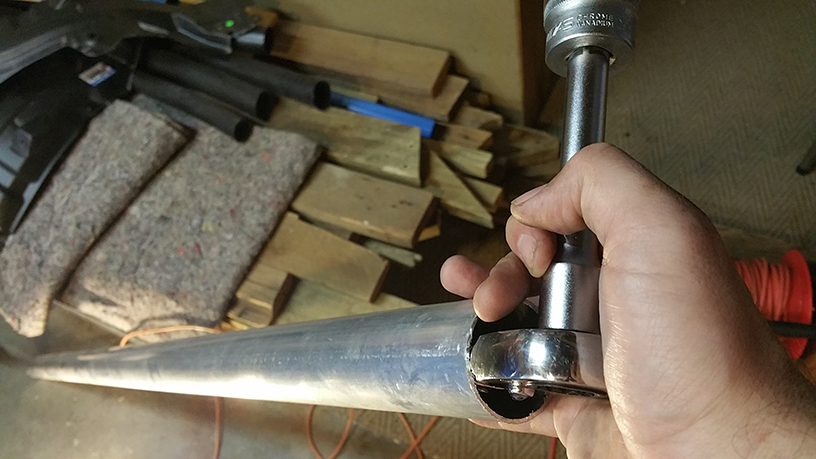Published on 8/24/2016
After the long months of stripping, painting and reassembling the car, I had high hopes for getting around in it for a bit. Alas, it was not to be.
I had previously replaced the rear wheel bearings as part of the initial restoration, and I guess I should have expected that the front bearings would retire at some point too. For a long time before the teardown I had lived with a slight rotational sound audible only at low speed, but figured it was not of any concern since it wasn’t getting worse. As it turns out, while standing around for a few months in my garage, the bearings had apparently deteriorated somehow. It was now making grinding noises under braking and the wheels were tram-tracking like crazy on bumpy surfaces. The former probably only became apparent after I had replaced both the front rotors and pads during the reassembly, the latter I had ascribed to the Konis and poly-bushes, but it was worse now and pretty disconcerting. So I pulled off the front brake and hub assemblies, after I acquired a 2 meter piece of pipe, and found grease all over the one dust cap with both bearings having sideways play in excess of 2 to 3 millimeters, which would explain the instability of the front wheels.

So then I had to get hold of new bearings. This front-hub and bearing assembly is considered a unit, and Mazda doesn’t have a separate part number for only the bearing. The EPC only details the entire hub as a single part. So of course the dealer price per hub was around R4500.00, where-as I could get aftermarket parts from both the UK and Dubai for less than R1000.00 and R500.00 respectively. So I ordered and waited.
While waiting for the parts I got another set of stands and lifted the rear of the car off the ground so that I could also adjust the handbrake. This has never worked properly before, but it’s a simple process involving a small adjustment screw on either side. With that done, and the hubs finally here, I “piped” everything back together again in no time, and the results are...dramatic. The front-end feels way more solid and composed now, with the turn-in response better than it has ever been. I’m really happy now, and bearing life is something I will always consider and inspect whenever I buy another older car.

